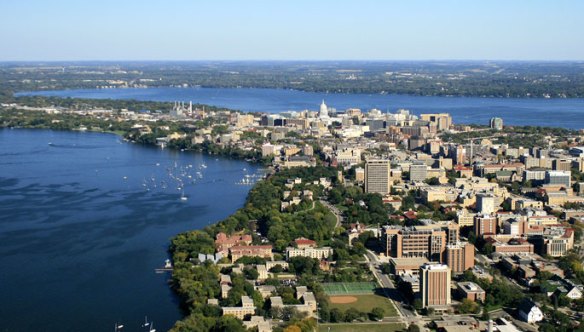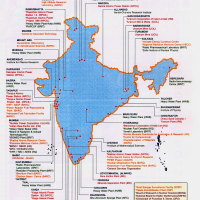By Alisher Khamidov
BISHKEK, Kyrgyzstan, Oct 24 2012 (EurasiaNet) – As a child, Feruza Alimova dreamed of becoming a lawyer so she could help disabled people.
But the 22-year-old cannot pursue a law degree because a bone deformity keeps her homebound. Her parents, who make a living growing cotton and tobacco in the Kyrgyzstani hamlet of Chekabad, in the Ferghana Valley, spend a large chunk of their income on expensive medications for Feruza and two other children suffering a similar bone condition.
Mukhabat, Feruza’s mother, says neighbours blamed her and her husband for their children’s disabilities. “We were also ashamed at the beginning, but gradually we decided that what mattered is not the opinions of others, but the happiness of our children,” Mukhabat told EurasiaNet.org.
Because public minibuses do not accommodate her wheelchair, Feruza could not attend law school. Instead, last year she completed a knitting course offered by a local vocational school.
Across Central Asia, hundreds of thousands of disabled people are unable to attend school because they live in a world with few handicap-accessible amenities, according to the State Department’s 2011 Human Rights reports for Uzbekistan, Kyrgyzstan, and Tajikistan.
In Tajikistan, the law “requires government buildings, schools, hospitals, and transportation to be accessible to persons with disabilities, but the government did not enforce these provisions,” the report states.
In Uzbekistan, the State Department maintains that disabled Uzbeks are stigmatised and educational opportunities are limited for those unable to walk on their own. “Many of the high schools constructed in recent years have exterior ramps, but no interior modifications that would allow wheelchair accessibility,” the report stated.
Civil society groups say Central Asian governments are resistant to addressing the issue.
“Authorities (across the region) view a disability as a medical ailment that can be treated, and not as a social condition that needs to be accepted by society,” said Azat Israilov of Kelechek, a Bishkek-based non-governmental organisation that works with disabled children. As a result, state assistance is often limited to monthly payments to help cover medicine, he said.
In a continuation of Soviet-era practices, all of the Central Asian republics divide disabilities into three groups. People with “category one” disabilities are completely dependent on others for care; people in “category two” can take care of themselves with assistance (blindness, some intellectual disabilities, and bone deformities fall into this category); “category three” can include impaired vision and rheumatism. State-run medical commissions assign the categories.
According to official data, in Kyrgyzstan, Tajikistan, and Uzbekistan, individuals in category one receive up to 70 dollars per month; no precise figure is available for Kazakhstan, though the number is sometimes reported as 100 dollars.
The cash is welcome, but nothing like the benefits that disabled people received a generation ago, before the Soviet Union collapsed.
“During the Soviet period, we (disabled people) enjoyed many privileges such as free healthcare, state subsidies, and allowances. Now most of these perks are gone,” said Ilkhom Madumarov, a Tashkent resident in his late fifties who, missing a leg, is in category two.
Mukhabat, Feruza’s mother, says the cash benefits for her children, whose disabilities all fall into category one, is not enough to cover their monthly treatment. But it’s not the size of the payments that makes her angry.
“What my children need is not just small monetary compensation; they want to be treated like everyone else. The government needs to create conditions in which children like mine can function like normal people despite their disabilities,” she said, such as access to schools.
For years, international aid agencies have promoted reform. But in recent years, their support has dwindled. Following the May 2005 massacre in Andijan, a suspicious central government in Tashkent forced many foreign non-governmental organisations out of Uzbekistan. And since the 2010 political turmoil in Kyrgyzstan, Israilov of Kelechek complains, much of the donor community’s attention has focused on post-conflict reconstruction efforts.
In some cases, too, aid agencies appear to be suffering from donor fatigue. Despite pressure from international development outfits, endemic corruption and bureaucracy have hampered reform efforts, aid workers say privately.
For example, given the monetary compensations and other perks associated with disability status (people with disabilities pay lower taxes, obtain subsidised medical treatment at state-funded clinics, and receive discounts when using public transportation), government disability commissions throughout Central Asia often try to extort bribes from applicants, some of whom do not have disabilities.
A December 2010 law adopted by Uzbekistan’s parliament abolished financial payments for category three disabilities, a move that impacted 200,000 individuals, who lost monthly benefits of 60,000 sums (37 dollars) a month. Legislators said they were trying to make the system more efficient. Observers in Tashkent believe the law is also intended to crack down on corrupt government employees selling disability permits.
More generally, benefits seem to be on the chopping block in budgeted-squeezed Central Asian states. On Oct. 18, Kyrgyzstan’s government announced budget cuts that will affect social spending.
Some disabled people have taken radical measures to improve their plight. Since the April 2010 uprising in Kyrgyzstan, a group of disabled people have illegally occupied a mansion belonging to the ousted president’s hated son.
In Uzbekistan, meanwhile, a group of people with disabilities petitioned several independent news outlets in March, blowing the whistle on alleged infighting within the Society for Disabled People of Uzbekistan, a quasi-government agency that administers some of the state’s assistance programmes. The petition claimed the Society is rife with corruption and nepotism.
Such outspoken criticism of the government is rare in Uzbekistan and often punished severely. “These protest letters indicate the extent of despair,” said a local teacher familiar with the campaign.
*Editor’s note: Alisher Khamidov is a researcher specialising in Central Asian affairs.
This story was originally published by EurasiaNet.org.







 Baloch fighters at a location in
Baloch fighters at a location in 











